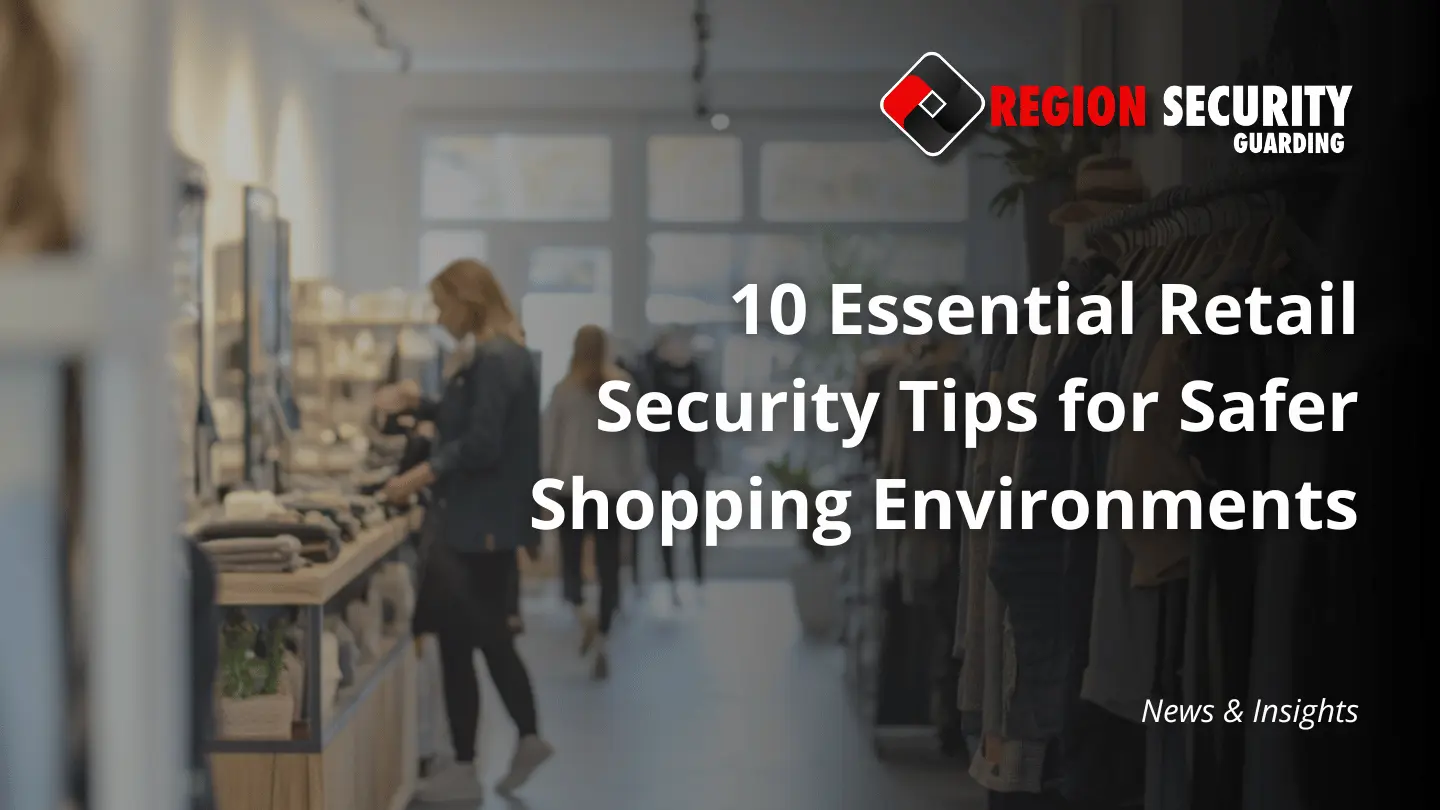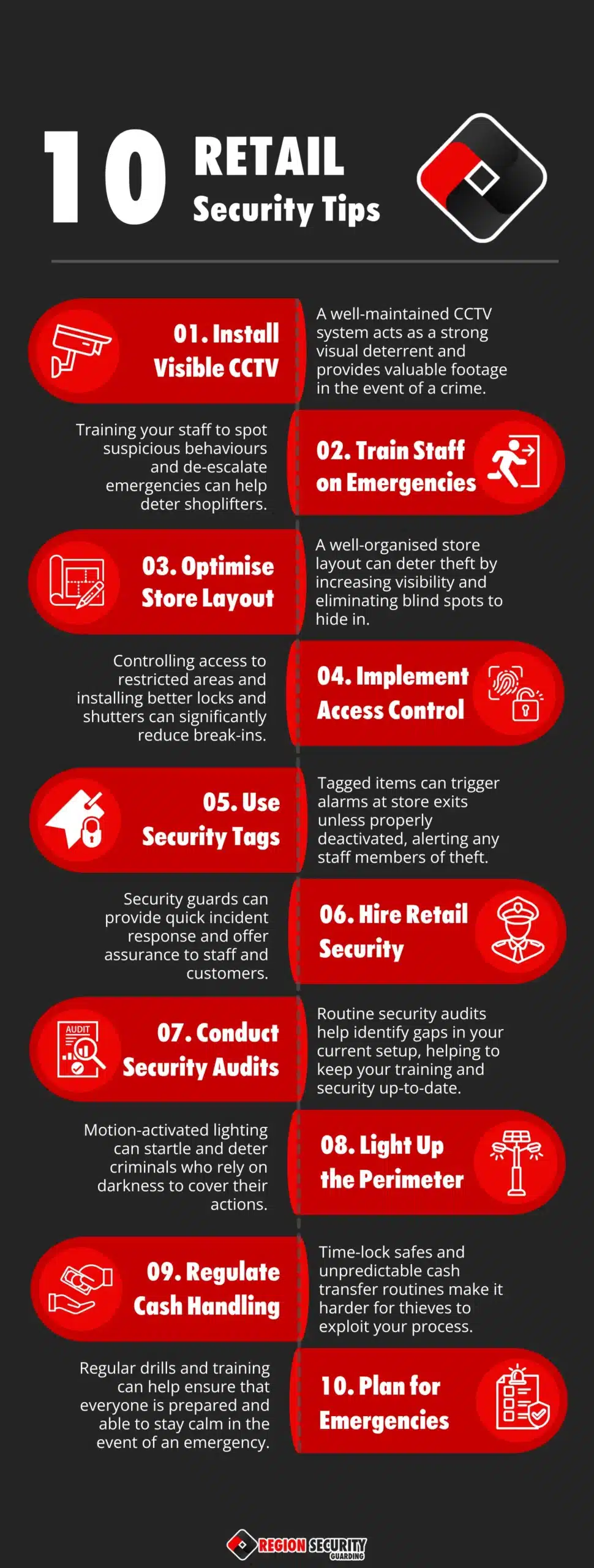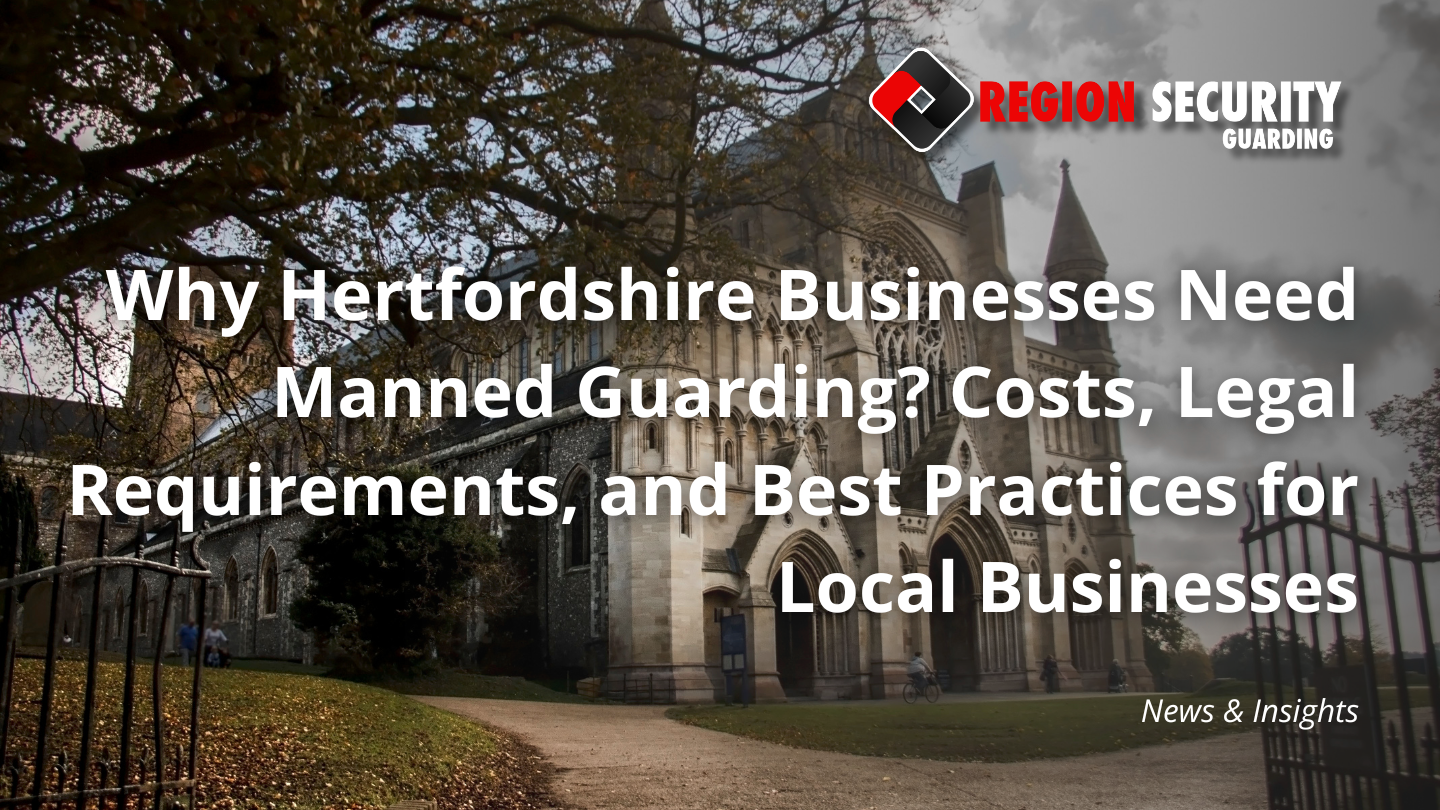Retail crime continues to pose a significant challenge for business owners across the UK. From shoplifting and vandalism to more serious incidents of violence and abuse, the risks can lead to both financial loss and emotional stress. In 2023-24 alone, retailers reported approximately 737,000 incidents of violence and abuse, highlighting the urgent need for stronger store security measures.
Whether you run a small independent shop or manage a larger chain, creating a safe, secure environment for your staff, customers, and stock should be a top priority.
At Region Security Guarding, we understand the unique challenges that come with retail security. That’s why we’ve compiled these 10 essential retail security tips to help protect your store and provide a safer shopping experience for everyone.
Table of Contents

1. Install a Visible CCTV System
CCTV is a cornerstone of any effective shop security best practices. A well-maintained system acts as a strong visual deterrent and provides valuable footage in the event of a crime. Place visible cameras at key locations such as entrances, exits, checkouts, and high-risk areas to discourage theft and antisocial behaviour.
Ensure your system is up-to-date and complies with GDPR (General Data Protection Regulation) guidelines. Enforcing simple rules like only recording necessary store activity, and keeping it stored for a reasonable amount of time can help to ensure this. It’s also good practice to display signage to inform customers of your CCTV usage, as this not only meets legal regulations, but also reinforces the deterrent effect.
2. Train Staff on Emergency and Incident Handling
Your employees are on the front line when it comes to shoplifting prevention strategies. With retail violence having tripled since 2020 — from 455 to over 2,000 incidents per day — training staff on how to respond to emergencies is more vital than ever.
Ideally, you should aim to equip your team with the skills to:
- Spot suspicious behaviour
- Use de-escalation techniques
- Follow emergency protocols
- Safely report incidents
Even small acts, such as greeting customers or offering help, can deter would-be shoplifters by showing that staff are alert and engaged.
3. Optimise Store Layout for Improved Visibility and Safety
Security starts with smart design. A well-organised store layout can deter theft by increasing visibility and eliminating hide spots.
Consider the following aspects when laying out your store:
- Avoid tall shelving that creates blind spots
- Place high-value items in open, visible areas
- Use mirrors to monitor hard-to-see corners
- Keep exits and aisles clear to support evacuation during emergencies
These steps are a key part of protecting retail staff and customers while also protecting your stock.
4. Implement Access Control Measures
Controlling access to restricted areas is key to preventing internal theft and unauthorised entry. Install keypad locks or fob systems for stockrooms, back offices, and staff-only zones. Keep a log of who enters and exits these areas to maintain a level of accountability.
Also, reinforce your building’s security with:
- Quality locks
- Security shutters
- Reinforced doors and windows
These simple measures can significantly reduce the risk of break-ins and vandalism.
5. Use Security Tags and Alarms
Security tags are an effective way to discourage theft. Tagged items trigger alarms at store exits unless properly deactivated, increasing the likelihood of detection.
To ensure these systems work properly:
- Train staff on how to apply and remove tags
- Educate them on how to respond to triggered alarms
- Test the system regularly to avoid false alerts
When used correctly, tagging creates a powerful barrier against casual theft.
6. Hire Professional Retail Security
A visible security presence is one of the most effective ways to deter criminal behaviour. Having trained, SIA-licensed retail security guards in store not only helps with responding quickly to incidents but also offers reassurance to staff and customers alike. Guards can also support with customer service and help manage difficult situations calmly and professionally.
However, if it’s a discreet approach you’re looking for, store detectives may be the better choice. They can observe shoppers without being noticed, keeping an eye out for suspicious behaviour. They can detain offenders, recover stolen items, and even carry out bag checks if internal theft is suspected.
If you’re looking for trusted, professional security staff, get in touch with our team today for a free, no-obligation quote.
7. Conduct Regular Security Audits
Routine security audits help identify gaps in your current setup, from securing retail premises with locks and lighting to ensuring your policies are up-to-date. Review everything from your physical infrastructure to your training procedures.
Ask yourself whether all blind spots are covered by CCTV, if your staff are following appropriate work policies, and if emergency exits are clear and accessible.
These regular reviews also help you keep your training and procedures current, ensuring that your security strategy evolves alongside any changes to your business or retail environment.
8. Secure the Storefront with Security Lighting
Security lighting, particularly motion-activated options around your perimeter, is especially important if your business operates in a quieter or more remote area. Lights that switch on suddenly when motion is detected can startle and deter criminals who rely on darkness to cover their actions.
Bright lighting also supports the effectiveness of any external CCTV you have in place, making it easier to capture clear footage of anyone acting suspiciously around your premises during off-hours. It can also increase the safety of any employees leaving the building after dark, since they’re fully visible as well.
9. Regulate Cash Handling Procedures
Cash is still a very tempting target for criminals. To minimise this risk, try to keep minimal amounts in tills and transfer money to a secure safe at irregular intervals. If you transfer money on a regular basis, you risk criminals understanding your routines and using this to their advantage. Time-lock safes and unpredictable cash transfer routines make it harder for thieves to predict and exploit your process.
You could also consider reducing cash handling altogether by encouraging contactless or card payments. This not only improves convenience for customers but also makes your store a less attractive target for theft.
10. Prepare for Emergencies
Emergencies can happen at any time, so it’s vital to have a clear plan in place as part of your in-store safety measures. Every member of staff should know how to respond in the event of a fire, medical emergency, or aggressive behaviour, and where to go if the store needs to be evacuated.
Regular drills and training updates can help ensure that everyone is prepared and able to stay calm under pressure, reducing the chance of panic and keeping your team and customers safe.

Conclusion
Protecting your retail business goes beyond just locking the doors at night. It’s about creating a safe and welcoming space where staff feel secure and customers enjoy shopping. By implementing the ten security tips outlined above, you can significantly reduce your store’s vulnerability to crime and focus on running your business with greater peace of mind.
If you’re ready to strengthen your retail security, don’t hesitate to get in touch with us to explore flexible, tailored solutions that meet the unique needs of your store.








